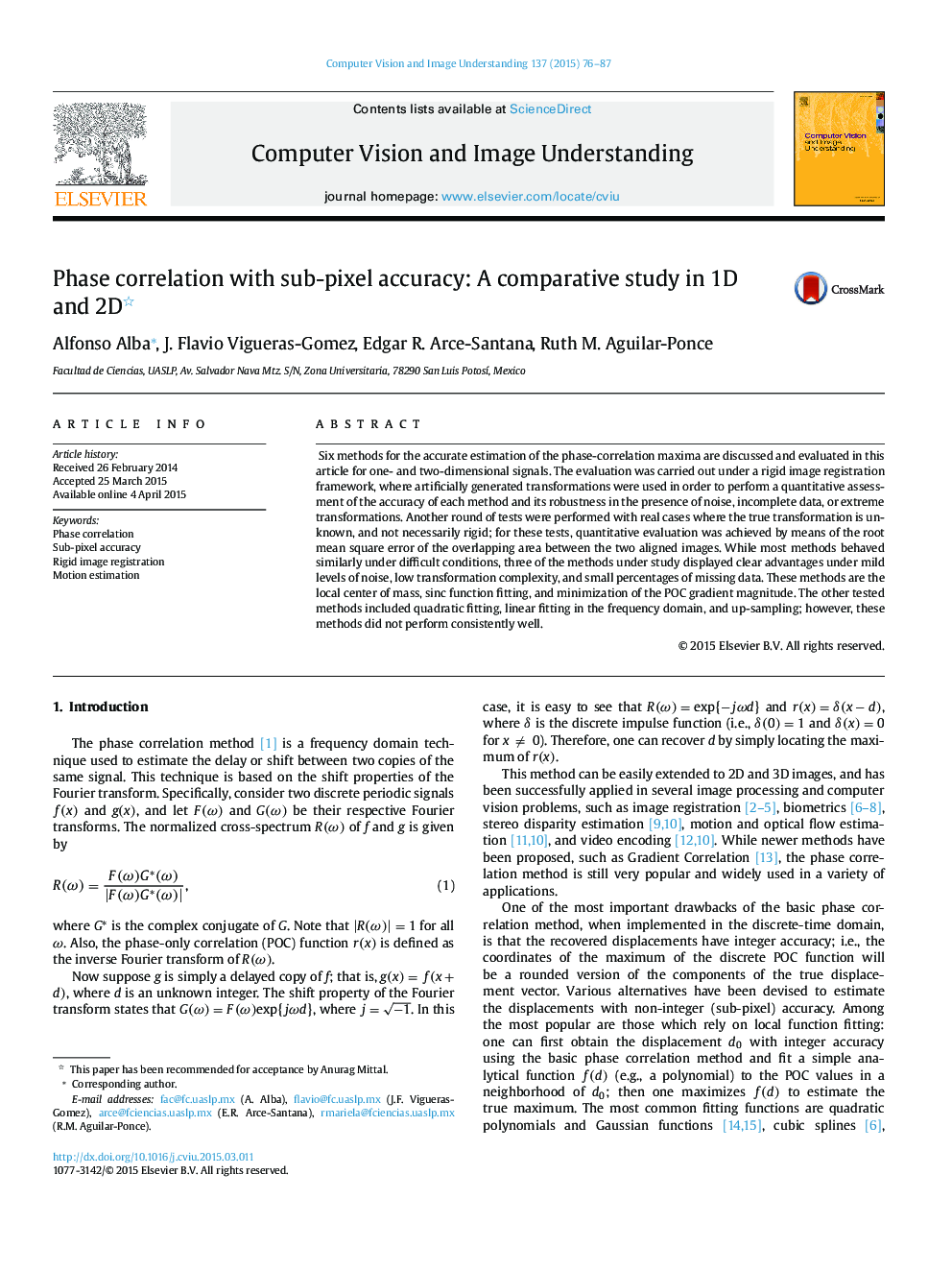| Article ID | Journal | Published Year | Pages | File Type |
|---|---|---|---|---|
| 525727 | Computer Vision and Image Understanding | 2015 | 12 Pages |
•Six methods for the accurate estimation of phase-correlation maxima are evaluated.•Methods are tested under noise, extreme transformations, incomplete data, and for real cases with unknown transformations.•Sinc function fitting provides the best average accuracy.•Local Center of Mass, and Minimization of the POC gradient provide good balance between accuracy and efficiency.
Six methods for the accurate estimation of the phase-correlation maxima are discussed and evaluated in this article for one- and two-dimensional signals. The evaluation was carried out under a rigid image registration framework, where artificially generated transformations were used in order to perform a quantitative assessment of the accuracy of each method and its robustness in the presence of noise, incomplete data, or extreme transformations. Another round of tests were performed with real cases where the true transformation is unknown, and not necessarily rigid; for these tests, quantitative evaluation was achieved by means of the root mean square error of the overlapping area between the two aligned images. While most methods behaved similarly under difficult conditions, three of the methods under study displayed clear advantages under mild levels of noise, low transformation complexity, and small percentages of missing data. These methods are the local center of mass, sinc function fitting, and minimization of the POC gradient magnitude. The other tested methods included quadratic fitting, linear fitting in the frequency domain, and up-sampling; however, these methods did not perform consistently well.
